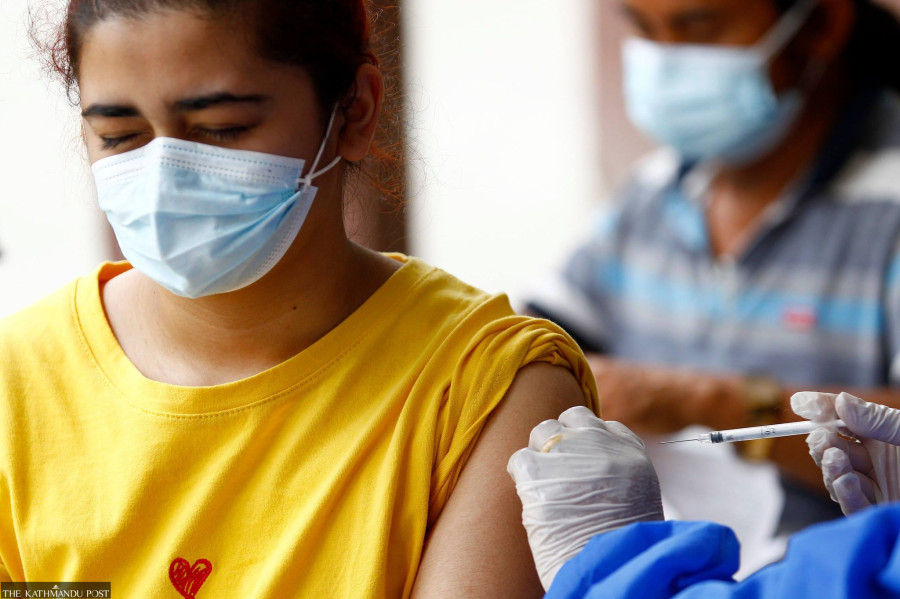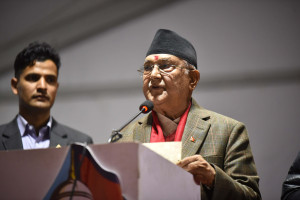Tue, Dec 30, 2025
Editorial
Vaccine void
Why do we have to wait for donors to supply us with emergency Japanese Encephalitis vaccines?
bookmark
Published at : August 12, 2025
Updated at : August 13, 2025 06:53
Among vector-borne diseases, Japanese Encephalitis (JE) is the leading cause of death in Nepal. Last year, 23 people succumbed to it, including one in the national capital, and over 80 infections were reported. This year, there was a sharp spike in infections in some 10 days as the number of cases rose from 13 to 33 across 18 districts, resulting in three deaths. With a fatality rate of over nine percent among infected people, the disease, which killed nearly 2,000 people in the country in 2005, has consistently caused suffering. Consequently, in 2006, Nepal started administering vaccine doses, eight years before the World Health Organisation had officially certified the vaccine, due to high rates of infections and deaths.
Complications from JE infection can cause permanent injuries to the brain and nervous system. The disease has no cure. However, safe and effective vaccines have been developed to prevent infection. The government integrated the JE vaccine into routine immunisation in 2015. Even then, people still die, and dozens get infected by the potentially deadly virus every year. The disease has a higher mortality rate in people over 15 years—the age group that did not get the vaccine during routine immunisation. Health ministry’s data show that unvaccinated individuals make up most of those infected and dead.
As the JE virus is transmitted to humans through the bite of infected Culex mosquitoes, doctors advise avoiding mosquito bites and getting vaccinated for people living in or travelling to disease-endemic areas. Yet that is not enough. Experts say it is high time to vaccinate all those at risk. While the vaccine does not help in outbreak management, it does offer immunity against future infections. Officials at the Department of Health Services (DoHS) claim there are enough people and resources for a vaccination drive, but little or no funding for vaccine procurement. The department has reportedly tried to secure funds from government and development partners alike. However, such efforts have thus far yielded no results.
The case for vaccinating the estimated 12.5 million people at high risk of JE in Nepal is still not a priority. Avoiding mosquito bites is just a small part of managing the disease. To drastically decrease the risk of JE, a vaccination drive must be initiated at the earliest. Lack of funds cannot be justified for such an emergency health measure. In any case, the Health Ministry barely spent 60 percent of its budget in the last fiscal year. The unutilized funds, for instance, could have been spent on the procurement of the vaccine. The issue of controlling the spread of the number one killer among vector-borne diseases in Nepal deserves serious and urgent attention.
The DoHS also needs to give continuity to its efforts to secure funds from development partners. Its previous failure to convince the partners, including the WHO, to support a JE vaccination drive should not hold it back from continuing to seek such assistance. But why do we have to rely on external sources even to save the lives of our own people? There is not a moment to lose. If there is a repeat of the kind of outbreak we saw back in 2005, it will not be because of lack of funds. It will be because of the Nepali state’s dereliction of duty to look after the health and wellbeing of its citizens.
Most Read from Editorial
Editor's Picks
Nepal’s workplaces still fail new mothers
When will Nepali-origin professional footballers in Europe play for Nepal?
‘Like a dream’: Labourer from Dalit community secures full MBBS scholarship
Why Nepal is launching a system to track foreign nationals
Nepal achieves global vaccine target, seven years ahead of schedule
E-PAPER | December 30, 2025
×




 10.12°C Kathmandu
10.12°C Kathmandu












%20(1).jpg&w=300&height=200)

